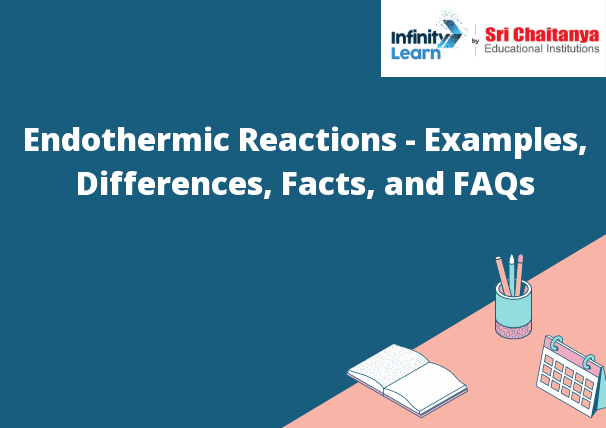Endothermic Reactions
Endothermic reactions are those that absorb energy from their surroundings in order to occur. This energy can come in the form of heat, light, or electricity. The chemical reaction itself will not produce any energy, but the products of the reaction will release energy into the environment. This can make endothermic reactions useful for powering devices or machines.

An endothermic reaction is a chemical reaction that absorbs heat from its surroundings. The reaction between sodium and chlorine gas to form sodium chloride is an example of an endothermic reaction. In this reaction, sodium and chlorine gas react to form sodium chloride and heat. The heat is absorbed by the reaction and the temperature of the surroundings decreases.
The physical and chemical changes that occur in an endothermic reaction can be summarized by the following equation:
ΔH =enthalpy change
ΔS = entropy change
The enthalpy change, ΔH, is the amount of heat absorbed by the reaction. The entropy change, ΔS, is a measure of the disorder of the system. The greater the entropy change, the more disorder is introduced into the system.
Endothermic reactions are used to cool objects. For example, the air conditioning system in a car uses an endothermic reaction to cool the air inside the car. The reaction between ammonia and hydrogen chloride gas to form ammonium chloride is used to produce the refrigerant in an air conditioning system. In this reaction, ammonia and hydrogen chloride gas react to form ammonium chloride and heat. The heat is absorbed by the reaction and the temperature of the surroundings decreases.
Endothermic reactions are chemical reactions that require an input of energy in the form of heat for the reaction to proceed. In these reactions, the products have higher energy than the reactants. Here are some examples of endothermic reactions:
- Photosynthesis: The process by which plants, algae, and some bacteria convert carbon dioxide and water into glucose and oxygen using energy from sunlight. This reaction is endothermic as it requires energy from sunlight to drive the synthesis of glucose.
6CO2 + 6H2O + energy (sunlight) → C6H12O6 + 6O2
- Dissolution of Ammonium Nitrate: When solid ammonium nitrate dissolves in water, it absorbs heat from the surroundings, making it an endothermic process.
NH4NO3(s) + H2O(l) → NH4+(aq) + NO3-(aq) + heat
- Melting of Ice: The transition of solid ice into liquid water requires the addition of heat energy. The heat is absorbed to break the hydrogen bonds between water molecules.
H2O(s) + heat → H2O(l)
- Electrolysis of Water: The decomposition of water into hydrogen gas and oxygen gas using an electric current is an endothermic reaction. Energy is required to break the bonds within the water molecule.
2H2O(l) + energy → 2H2(g) + O2(g)
- Reaction between Barium Hydroxide and Ammonium Chloride: When solid barium hydroxide and ammonium chloride are mixed, they react and absorb heat from the surroundings, causing a decrease in temperature. This is often used in cold packs or instant ice packs.
Ba(OH)2(s) + 2NH4Cl(s) → BaCl2(aq) + 2NH3(g) + 2H2O(l) + heat
These are just a few examples of endothermic reactions. In each case, the reaction requires an input of energy in the form of heat to proceed, resulting in products with higher energy content than the reactants.
Here are some key facts about endothermic reactions:
- Definition: An endothermic reaction is a chemical reaction that absorbs heat energy from its surroundings. The term “endothermic” literally means “absorbing heat.”
- Energy Absorption: In an endothermic reaction, the energy absorbed is typically in the form of heat, but it can also involve the absorption of other forms of energy, such as light or electricity.
- Temperature Change: During an endothermic reaction, the temperature of the surroundings decreases because heat is being taken in from the environment. This temperature decrease is a distinguishing feature of endothermic reactions.
- Examples of Endothermic Reactions: Some common examples of endothermic reactions include:
- Dissolution of certain salts in water, such as ammonium nitrate (NH4NO3).
- Melting of ice: The process of converting solid ice into liquid water requires the absorption of heat energy from the surroundings.
- Photosynthesis: In plants, the process of converting carbon dioxide and water into glucose and oxygen is endothermic, as it requires energy from sunlight.
- Energy Level Diagram: In an energy level diagram, endothermic reactions are represented by reactants at a lower energy level than the products. The energy difference between the reactants and products is positive, indicating that energy is absorbed during the reaction.
- Activation Energy: Like all chemical reactions, endothermic reactions require an initial input of energy called the activation energy. This energy is needed to break the bonds of the reactants before new bonds can form.
- Thermodynamics: Endothermic reactions are associated with positive changes in enthalpy (∆H), which indicates that the reaction has absorbed heat. The overall change in free energy (∆G) is positive as well.
- Examples in Everyday Life: Endothermic reactions have practical applications in everyday life. For instance, endothermic reactions are used in instant cold packs, which become cold when a reactant absorbs heat from the surroundings. Endothermic reactions are also involved in endothermic chemical reactions used for cooling purposes, such as in air conditioning systems or refrigerators.
Remember that endothermic reactions are characterized by heat absorption from the surroundings, a decrease in temperature, and a positive change in enthalpy.





